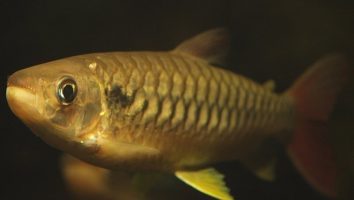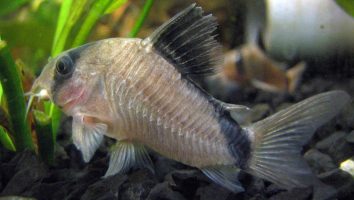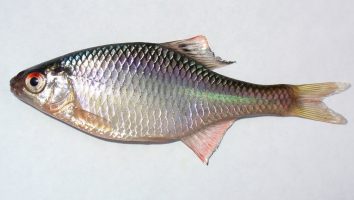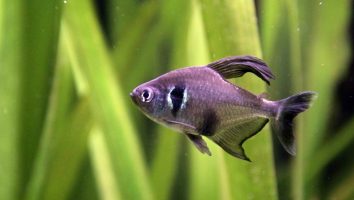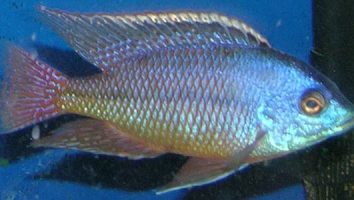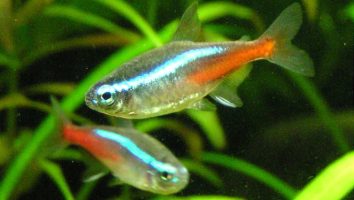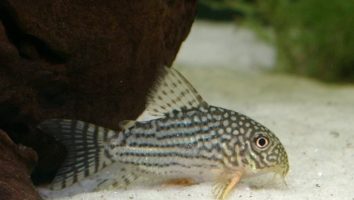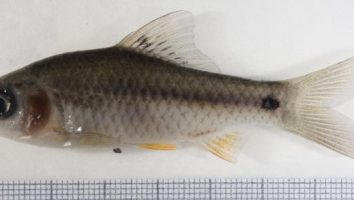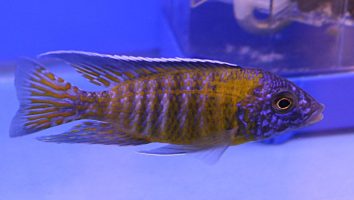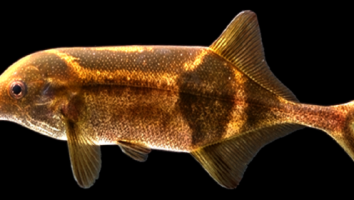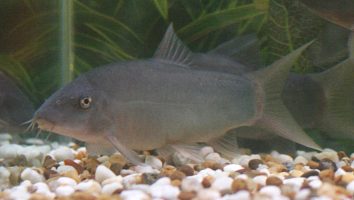The bluegill is a freshwater fish that is native to North America. It is a member of the sunfish family and is closely related to the bass.
The bluegill is a popular choice for fish tanks because of its vibrant color and easy-going personality. They are also known to be very hardy, which makes them a good choice for beginner fishkeepers.
If you’re thinking about getting a bluegill for your aquarium, this guide will teach you everything you need to know about their care.
Table of contents
Species overview
The bluegill (scientific name: Lepomis macrochirus) is a freshwater fish that’s native to North America. It’s part of the sunfish family and is closely related to other popular freshwater fish like the bass and the crappie.
Bluegills are most commonly found in ponds and lakes, but they can also live in streams and rivers. They prefer areas with a lot of vegetation, as this provides them with places to hide from predators and ambush prey.
Bluegills are omnivorous, which means they eat both plants and animals. Their diet consists of things like insects, small fish, and crustaceans.
Bluegills are popular game fish and are often caught by anglers. They’re also a popular choice for stocking ponds, as they’re known to be good at controlling the population of smaller fish.
Appearance

The Bluegill is a very popular freshwater fish that is easily recognizable. These fish have a deep, compressed body that is dark olive green on the top half. The bottom half of the fish is much lighter, usually white or yellow.
You’ll notice a dark olive green band that runs from the gill cover to the tail. This band is bordered by a light stripe that extends the length of the fish.
The fins on a Bluegill are all dark olive green as well. The dorsal and anal fins are both fairly tall and start about two-thirds of the way back on the fish. The caudal fin is forked and fairly tall as well.
The pectoral and ventral fins are both short and rounded.
One of the most notable things about the Bluegill is the large mouth that extends past their eyes. They have small teeth that line the edges of their mouths.
Lifespan
The average lifespan of a bluegill is about 5 to 10 years. However, they can live much longer in the right conditions.
As with any fish, the lifespan of a bluegill is greatly impacted by the quality of care it receives. If the fish is well cared for, it can easily live 10 to 15 years or longer.
Size
The average Bluegill size is about 4-12 inches long and weigh around 8-16 ounces.
Tank
Tank Size
The recommended minimum tank size for bluegill is 30 gallons. However, if you’re looking to keep a school of fish, you’ll need at least 50 gallons.
Water Parameters
Bluegill are a fairly easy fish to care for. They’re very tolerant of a range of water conditions, which makes them a good choice for beginner aquarists.
While they can adapt to a range of water parameters, it’s still important to provide them with the best possible environment. This will help them stay healthy and thrive in captivity.
Here are a few water parameters to keep in mind when setting up a bluegill tank.
- Water temperature: 60 to 80 degrees Fahrenheit
- pH levels: 6.5 to 8.5
- Water hardness: 4 to 16 dGH
- Alkalinity Levels: 2-12 dKH
What To Put In Their Tank
When it comes to setting up their tank you’ll want to mimic their natural habitat as closely as possible.
The substrate should be a mix of sand and gravel. You can use all of one or the other if you prefer, but a mix is going to look the best.
Plants are a great addition to any freshwater tank, but they’re especially important for bluegills. Not only will the plants provide them with some cover, but the roots will act as a filter for the water.
We recommend using fast-growing plants like hornwort or water wisteria. These will help keep the water quality high and give the bluegills someplace to hide.
Rocks, driftwood, and caves are all great additions as well. These will help break up the line of sight in the tank and give the fish some places to hide.
As with any other fish, it’s important to avoid over-decorating their tank. You want to give them enough room to swim and feel comfortable.
Common Diseases
Bluegills are a fairly hardy fish, but that doesn’t mean they’re immune to disease. The most common illness that affects this species is gill rot.
This is a bacterial infection that targets the gills of the fish. The first signs of this disease are usually labored breathing and a loss of appetite.
If you notice either of these things, you should take a close look at the gills of your fish. If they’re red and inflamed, there’s a good chance your fish has gill rot.
Other signs of this disease include lethargy, cloudy eyes, and ulcers on the body.
If you think your fish might have gill rot, the best thing you can do is take them to a vet (or someone with experience in fish care). They’ll be able to give you the best course of action.
Treatment usually involves antibiotics, but it’s always best to get professional help before trying to medicate your fish on your own.
The best way to prevent this disease is by keeping the water in your tank clean and free of ammonia. Ammonia is toxic to fish and can cause a whole host of problems, including gill rot.
Behavior & Temperament
The bluegill is a popular sport fish that is known for its fighting ability when hooked. They are also known to be aggressive when it comes to feeding.
In the wild, bluegills mostly eat insects and small fish. They are opportunistic feeders, which means they will eat just about anything they can fit in their mouths.
When bluegills are kept in aquariums, they will typically eat anything that is small enough for them to fit in their mouths. This includes other fish, so it is important to only keep bluegills with fish that are too large for them to eat.
Bluegill
Bluegills are also known to be quite territorial. They will often establish dominance over other fish in the aquarium. If you have multiple bluegills, they may fight with each other for the best spots in the tank.
Overall, bluegills are aggressive fish that should only be kept with other aggressive fish. They are not a good choice for community tanks.
Tank Mates
When it comes to Bluegills, the best tank mates are other fish that occupy different parts of the water column.
Bluegills are surface feeders. They’ll often be seen swimming near the top of the water in search of food.
For this reason, it’s a good idea to add fish that stay lower in the water column. This will minimize the competition for food, and everyone will be happier as a result.
Some good Bluegill tank mates include:
- Largemouth Bass
- Smallmouth Bass
- Crappie
- Catfish
- Sunfish
- Trout
Breeding
Bluegill are another species of fish that don’t need much help when it comes to spawning. If you provide them with the right habitat and water conditions they’ll do the rest!
The first thing you need to do is identify the male and female fish. The males are much larger and have a more vibrant coloration.
Once you’ve done that, you need to prepare the breeding tank. It should be at least 30 gallons and filled with plants and hiding places. The water temperature should be between 75 and 80 degrees Fahrenheit.
When the breeding tank is ready, add two females for every male. The males will start to build nests out of plant material. Once the nests are built, the females will lay their eggs in them.
The male will then fertilize the eggs and guard the nest.
After about a week, the eggs will hatch. The fry will feed on microscopic organisms in the water. You can supplement their diet with baby brine shrimp.
As they grow, you can slowly introduce them to pellets and other foods.
Conclusion
Bluegill are a great fish for anyone to own. They’re relatively easy to care for and are very peaceful, making them a great addition to any community tank.
They’re also a lot of fun to watch and are sure to bring a smile to your face. We highly recommend them to anyone looking for a low-maintenance fish that’s still a joy to own.

